Go wild
Your guide to getting closer to nature this month
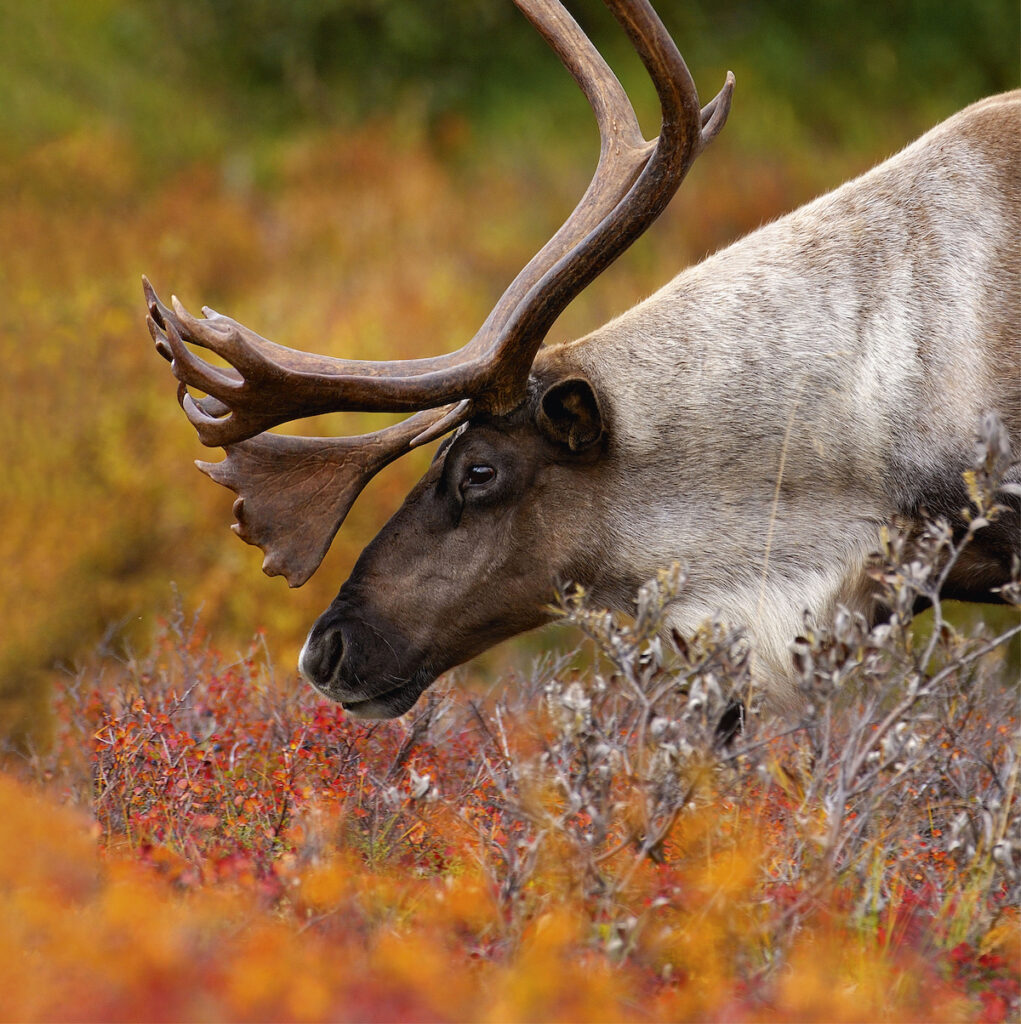
BOOK HIGHLIGHT OF THE MONTH
Walking on top of the world
Caribou
By Mark Raycroft & Pili Palm-Leis, Firefly Books, £20
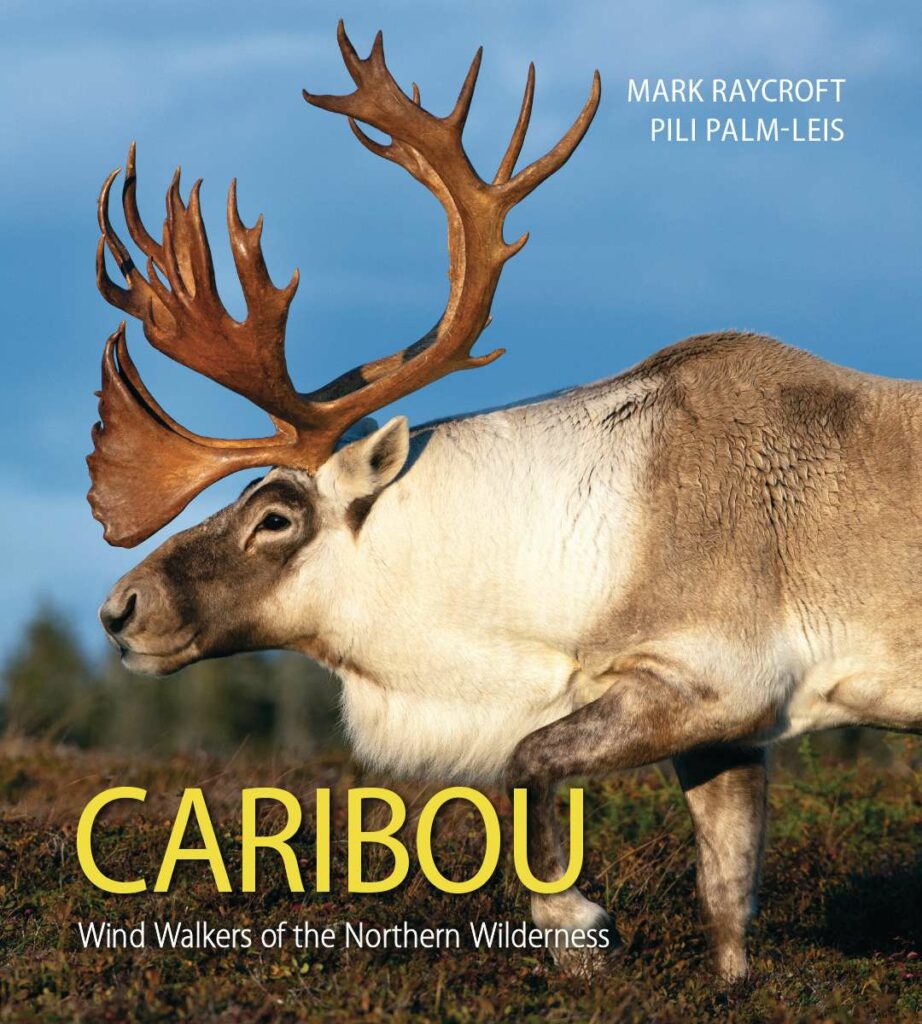
TAKE A TRIP TO THE TUNDRA AND boreal forests of North America and discover the world of the caribou in this beautiful book by author and photographer Mark Raycroft and author Pili Palm-Leis. Many of us know these mammals as reindeer, but in North America, they’re known as caribou.
The book contains 140 stunning images, taken across a range of seasons and habitats, which are accompanied by text from both Mark and Pili. Mark recounts his experiences spent tracking and photographing caribou amongst the wild landscapes. Pili provides factual text covering their range, ecology and behaviour, including the challenges they face and how they are perfectly adapted to living in the cold.
There’s also a chapter at the end of the book that provides advice and tips on how to photograph and film caribou.
MEET THE AUTHORS
Mark Raycroft and Pili Palm-Leis
The husband-and-wife team share their passion for shining a spotlight on an ancient ungulate

Why have you focused on caribou?
Mark: After completing my degree in wildlife biology, I became very focused on the large mammals of North America, specifically the family Cervidae (the antlered ungulates). Over the past 25 years, caribou have become my favourite subject to photograph and film. Their ability to survive the significant seasonal swings of the far north, their herd behaviours, and their incredible migrations all peaked my interest in this iconic species.
What fieldcraft skills do you need to photograph caribou?
Mark: To successfully photograph caribou one must understand their behaviour and also be able to work in the elements of the northern wild. One of my favourite aspects of being a wildlife photographer is the challenge of accurately observing the behaviour of your subject in order to capture images that create a window into their world.
Proper trip-planning and preparation, as well as durable camera equipment with powerful telephoto lens capabilities are essential. An eye for light is also important when striving to create content that will grab the attention of the viewer and best display these magnificent animals.
Are you worried about their future?
Mark and Pili: We are very concerned about caribou populations all across the north. Several subspecies have been designated as Endangered by the Committee on the Status of Endangered Wildlife in Canada.
These animals require large tracts of intact forest to survive – millions of hectares. Small mountain caribou herds are disappearing in real time from the oldgrowth forests of interior British Columbia and Alberta, as resource extraction degrades and fragments their habitat.
There are some emergency initiatives in place, such as maternity pens, which give caribou calves the opportunity to reach an age at which they can outrun predators, but these efforts must be accompanied by serious habitat protection.
Is the climate crisis a threat to caribou?
Mark and Pili: It is common knowledge that the far north is heating faster than any place on the planet and thaw/freeze events can cause mass starvation as the caribous’ food staple, lichen, becomes sealed off by inches of impenetrable ice.
Caribou have roamed the northern hemisphere for millennia and it is up to us to ensure that this amazing species endures.
TV SHOW OF THE MONTH
Macaque: Monkeys in the Mountains

Catch up on BBC iPlayer
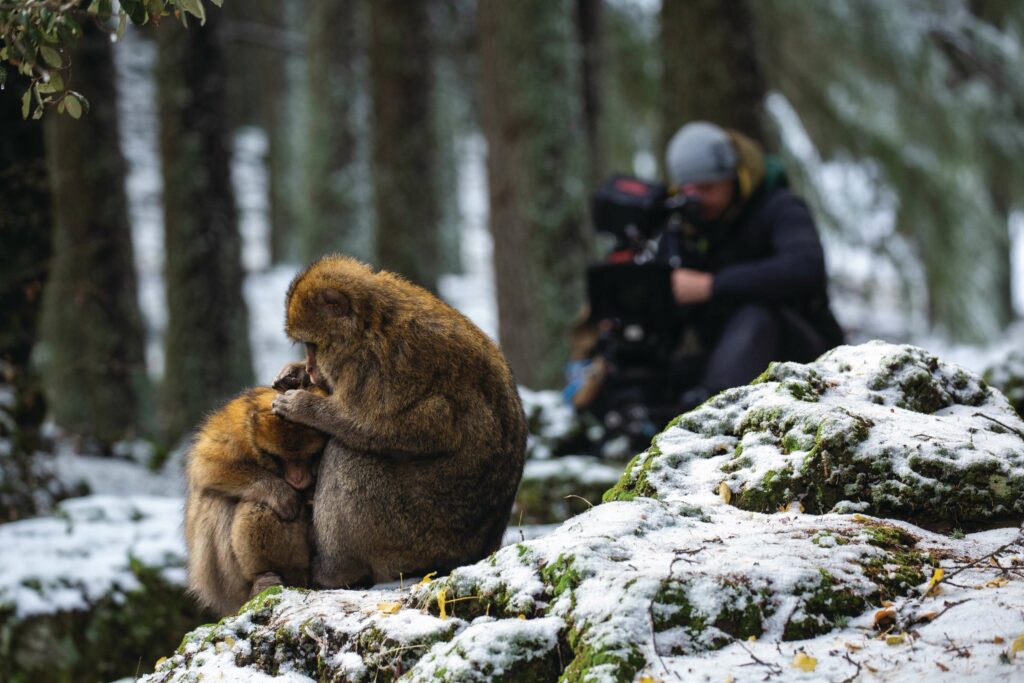
This Dynasties Special, narrated by David Attenborough, observes a troop of Barbary macaques in the Atlas Mountains, focusing on a male named Mac. At the start of the episode, the troop is without a leader and Mac steps up to the plate. But will he manage to hold onto power when faced with subordinates eyeing his throne, challenges from a rival troop, and extreme weather?
CHILDREN’S BOOK OF THE MONTH
The Search for the Giant Arctic Jellyfish: What Magic Lies Beneath
By Chloe Savage, Walker, £12.99

HAVE YOU EVER SET OUT ON A QUEST to see a particular species of wildlife, only to find it tantalisingly elusive? If so, then you’ll know how Dr Morley feels. She loves jellyfish, and has always been fascinated by the idea of finding a jellyfish that no one has ever seen: the giant Arctic jellyfish.
So she loads up her research ship and she and her crew head to the frozen north. Along the way, they enlist the help of narwhals and belugas, but will they ever catch a glimpse of this mythical giant, whose presence can be sensed, but remains just out of sight?
This magical illustrated book sparkles with a seemless blend of scientific endeavour, magical adventure and passion for the wild. Chloe Savage’s enchanting debut is a journey to the end of the Earth that will charge the imaginations of younger readers with an appetite for adventure.

BOOKS ROUND UP

The Trials of Life
By David Attenborough, HarperCollins, £20
Based on his acclaimed television series, David Attenborough’s trilogy of Life books are a deep dive into evolution (Life On Earth), ecology (Living Planet) and ethology (The Trials of Life). In recent years, the trilogy has been updated, and this is the turn of the final book, originally published in 1990.

Braiding Sweetgrass for Young Adults
By Robin Wall Kimmerer, adapted by Monique Gray Smith and illustrated by Nicole Neidhardt, Zest Books, £14.75
This lovely book is being released in a new format adapted for younger readers. Kimmerer combines her scientific and indigenous knowledge to explore the plants and animals around us, and the gifts and lessons they have for us.
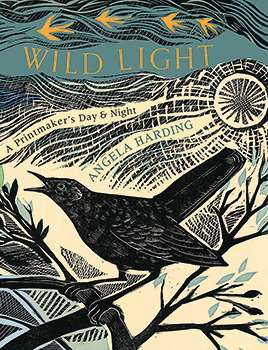
Wild Light
By Angela Harding, Sphere, £25
In her latest book, Angela Harding invites us to take a look at natural light (and darkness) – and how it changes both the world and, in turn, us. Featuring over 70 original illustrations in Harding’s distinctive style, the book takes us through 24 hours in nature and features poetry by famous authors in each chapter, as well as commentary by Harding on the species she has seen.

Ornithographies
By Xavi Bou, Lynx, €55
Wildlife photographer Xavi Bou has spent the last seven years taking images for his innovative Ornithographies project, which are now collated within this book. The striking images capture the invisible patterns traced by birds in flight. Each image stitches several seconds into a single frame – the result is a captivating marriage of science and art.
ID GUIDE
Roosting birds
During the winter months, some bird species roost together for safety and the chance to share information on good feeding areas. Here are some to spot now. For more ID guides, visit our website: discoverwildlife.com/identify-wildlife.
STARLINGS
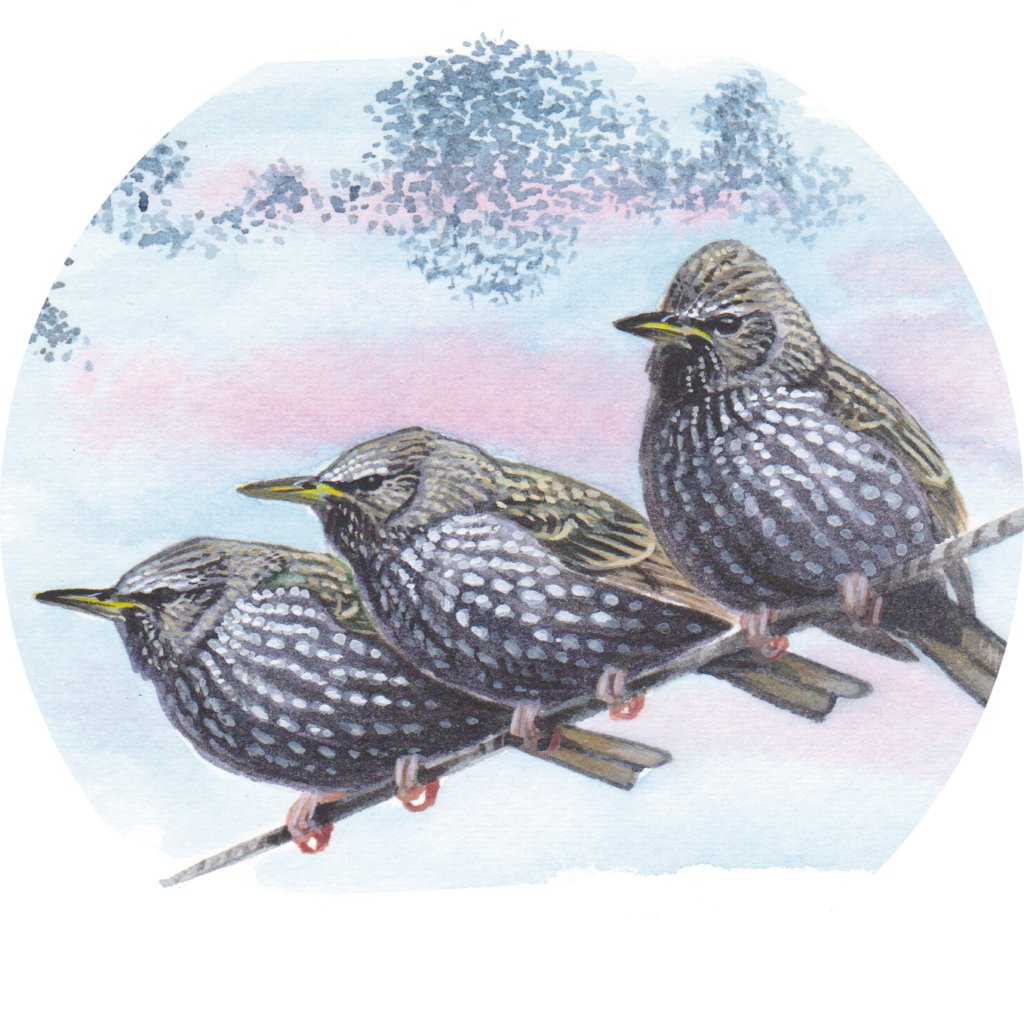
They perform stunning murmurations before settling down for the night, usually in reedbeds and on piers.
PIED WAGTAILS
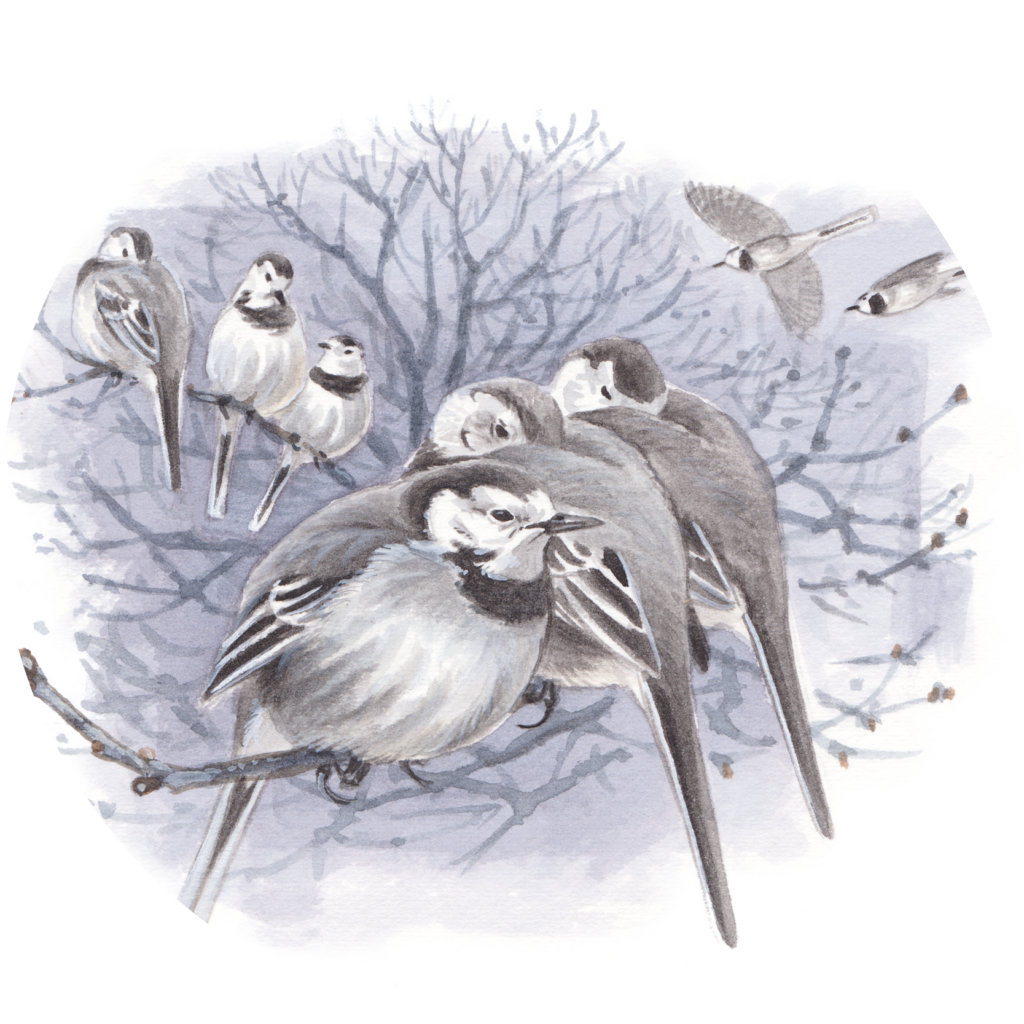
Providing a surprise for urban shoppers, they roost together in warm, well-lit trees or buildings.
GREENFINCHES
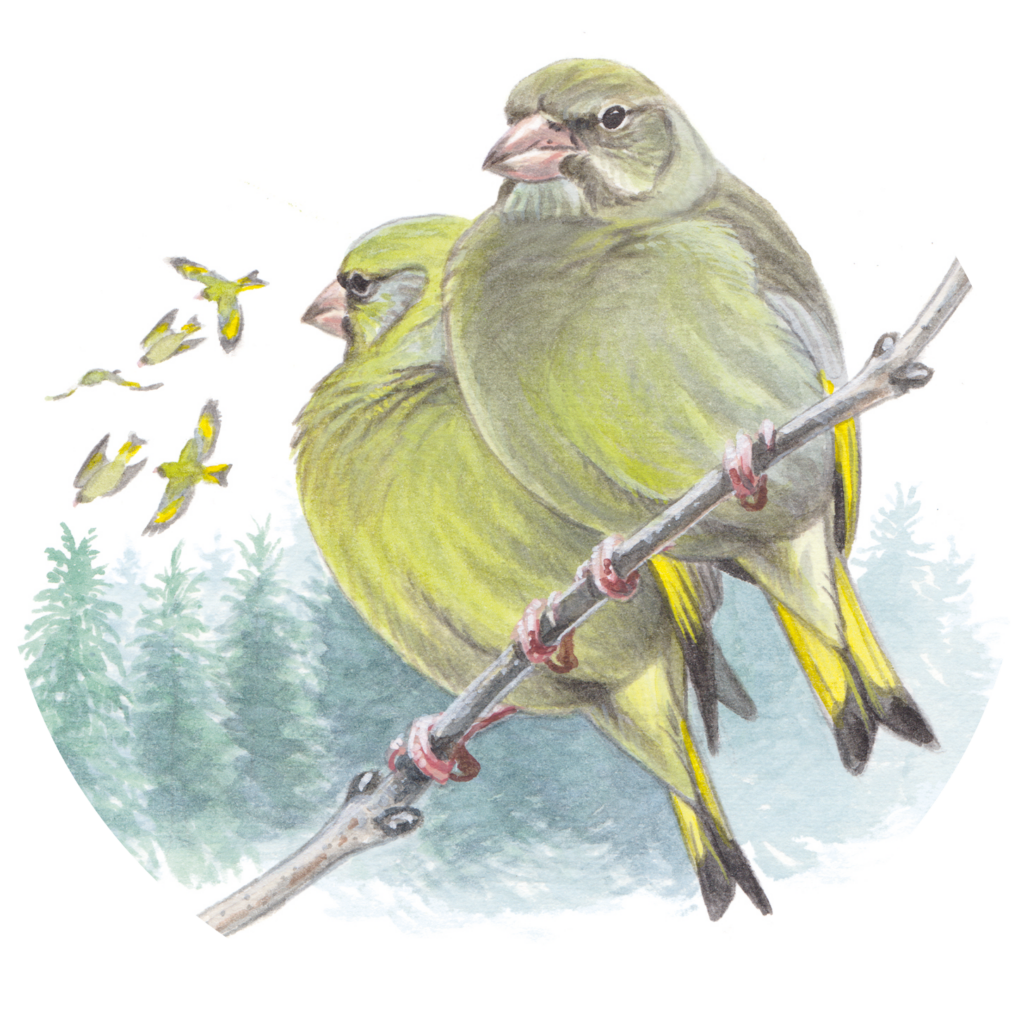
They regularly form communal roosts in trees during winter, sometimes numbering more than 100 birds.
PHOTOGRAPHY BOOK OF THE MONTH
Extinct and Endangered
By Levon Biss, with the American Museum of Natural History, Abrams, £35

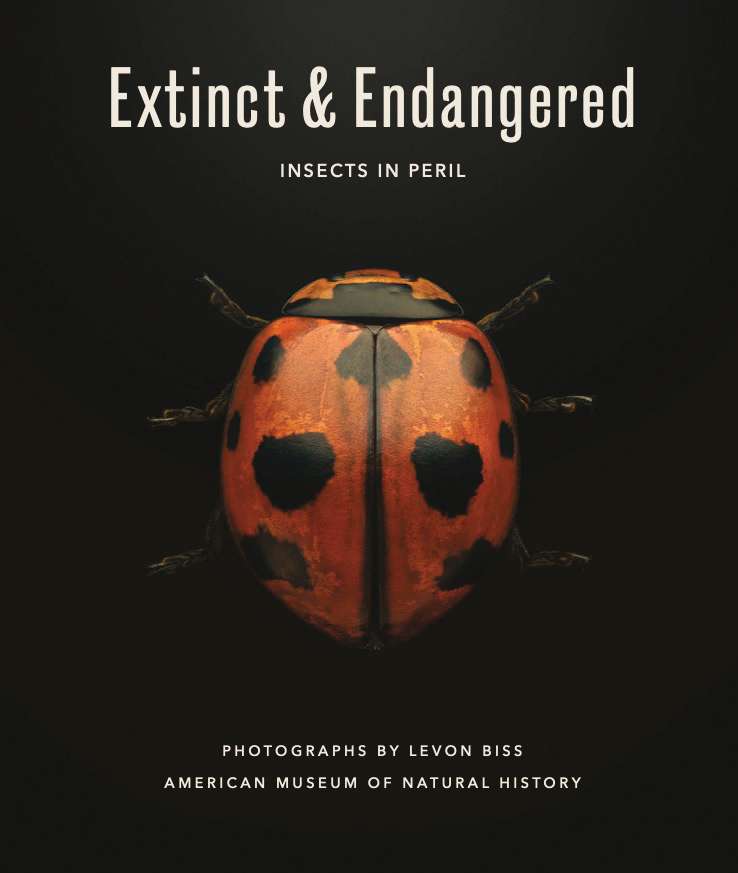
THIS BOOK IS BASED ON A JOINT exhibition project by the British macro photographer Levon Biss and the American Museum of Natural History (AMNH) in New York. It shines a light on 40 insect species that – as the title suggests – are either endangered or extinct. There are familiar species, such as the monarch butterfly and European hornet, as well as the now-extinct Xerces blue butterfly. The images are vivid and it almost feels like the insects are about to crawl off the page.
This is macro photography taken to the extreme, adapting traditional techniques to produce the desired results. Specimens of the 40 species were shipped to Biss’s London studio for an intense photographic study. Each final image took three weeks to create, consisting of up to 10,000 individual photographs. The exhibition, which is likely to tour various UK museums, consists of large-scale photographs where the tiny insects are blown up to 3m-high prints, allowing an in-depth and detailed look at the species.
Information accompanies each image and there is a foreword written by AMNH curator David A Grimaldi, which discusses the issues faced by insects today and the challenges in conserving these often overlooked and unloved animals.
MEET THE VOLUNTEER
“No other animal is as beautiful as the tiger”
Atul Singh is helping tigers and people to co-exist in the foothills of the Himalayas
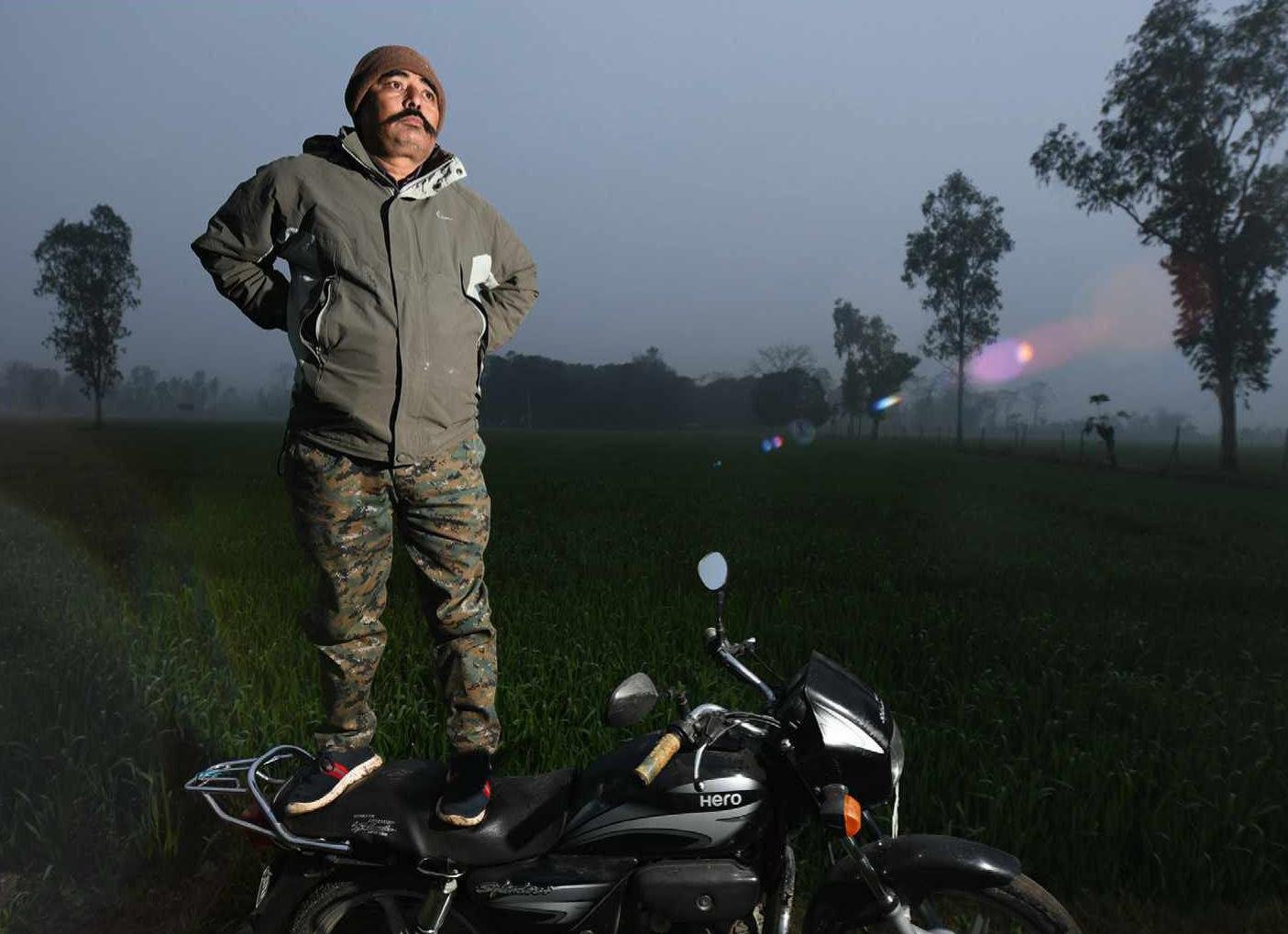
Atul Singh has been tracking tigers for over 30 years and currently leads a team of 10-12 community-based Bagh Mitras in Pilibhit Tiger Reserve, India. Roughly translating as ‘tiger friends’, Bagh Mitras are volunteers who spend their time helping reduce human-tiger conflict.
Why do you volunteer?
During my childhood, we would go into the beautiful forests of the Pilibhit Tiger Reserve with my grandfather and watch tigers. He was the first private tigerhunter in this area – the man the Forest Department called whenever there was a “man-eating” tiger on the loose. Thanks to him, I grew a great connection to the forests here, but as I became older, I began to wonder how we could save the tigers.
Pilibhit is a very long, narrow reserve, with a relatively high tiger population. Many people live here, too, and incidents of human-tiger conflict do happen. Locals have suffered losses and in the past may have decided to kill the tigers themselves. This is where the Bagh Mitras come in, working with local people to help them live peacefully with tigers.
What does your volunteering involve?
Every time a tiger comes into the area, we receive a call. We then work to support the Forest Department, who lead on the rescue of tigers that come into towns or farms.
Our first task is to do a round of the area and collect information. Then we explain to locals that, if they keep a safe distance from the tiger, it’s unlikely to harm them. The Forest Department decides if it is necessary to sedate and relocate the tiger, or if it will return to the forest on its own – in which case, we help them track and monitor the tiger very closely.
What have you achieved during your time volunteering?
We are seeing really good results. Humanwildlife conflict is on the verge of ending completely in Pilibhit Tiger Reserve. Today, people around the world are worried about the declining number of tigers, but in Pilibhit their number has doubled, and it is a matter of great pride for us.
Finally, the tiger is also the steed of [Hindu deity] Maa Durga, so I feel that by working for the tiger, I am serving Maa Durga. I feel very proud of my work.
5 THINGS WE LOVE
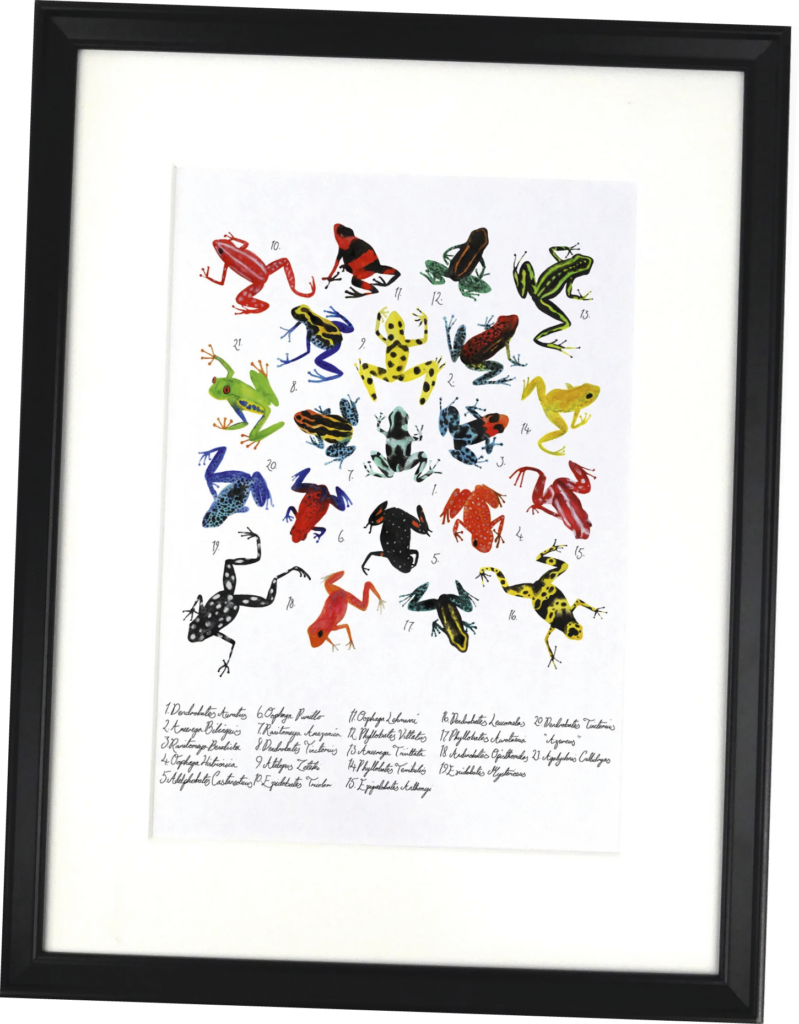
1 Dendrobatidae dart frog A4 art print, £10, alsothebison.co.uk

2 Chocolate orangutan, £8.75, chococo.co.uk
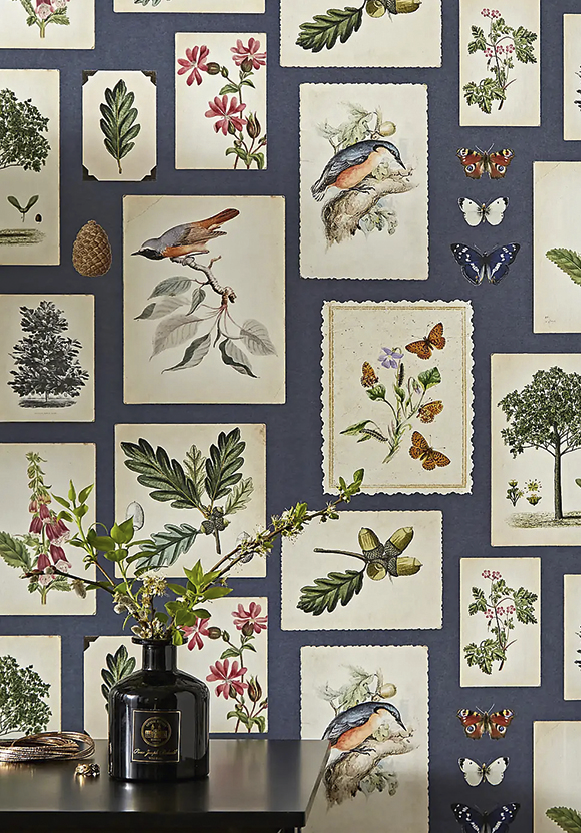
3 Natural History Museum woodland journal wallpaper, £12 for 10.5m length roll, dunelm.com

4 Hawke Vantage 8×2 binoculars, £149, uk.hawkeoptics.com
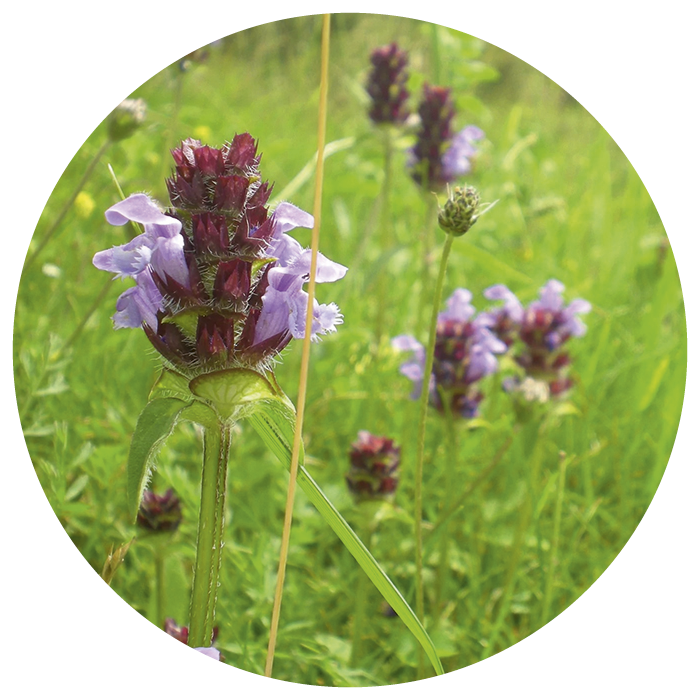
5 My First Meadow wildflower seed mixture, £4, shop. plantlife.org.uk